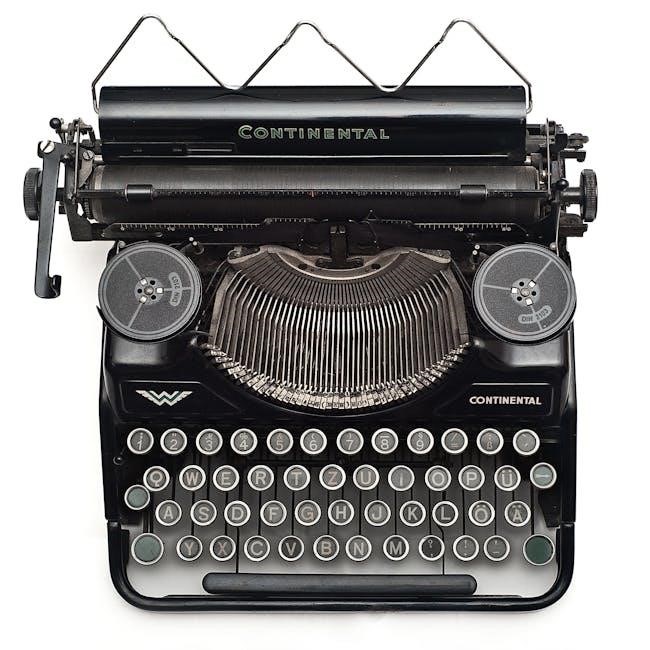Jan Brett’s “The Mitten”: A Comprehensive Overview
Jan Brett’s “The Mitten” is a beloved children’s book adapting a Ukrainian folktale. It tells the story of Nicki, who loses his mitten in the snowy woods. One by one, animals seek warmth inside, leading to a comical climax.
Jan Brett is a celebrated author and illustrator known for her distinctive style, often drawing inspiration from folk art and incorporating intricate border designs into her illustrations. Her works are beloved for their warmth, humor, and captivating visual details. Brett meticulously researches the cultural settings of her stories, enriching her books with authentic details. “The Mitten,” a retelling of a Ukrainian folktale, stands as one of her most acclaimed works, exemplifying her ability to blend engaging narratives with stunning visuals. Brett’s books have earned numerous awards and continue to be cherished by readers of all ages, making her a significant figure in children’s literature.

The Story of “The Mitten”
“The Mitten” narrates the tale of Nicki, who loses his white mitten in the snow. Woodland creatures, seeking warmth, one by one crawl inside until it’s bursting at the seams, leading to a surprising sneeze!
Plot Summary of “The Mitten”
The story begins with Nicki, a young boy whose Baba knits him white mittens. While playing in the snow, Nicki loses one of his mittens without noticing. A curious mole discovers the mitten and crawls inside to escape the cold. Soon, other woodland animals, including a rabbit, hedgehog, owl, badger, fox, and bear, find the mitten and squeeze in for warmth.
As the mitten becomes increasingly crowded, a tiny meadow mouse manages to climb inside. The mouse tickles the bear’s nose, causing him to sneeze with great force. The sneeze sends all the animals flying out of the mitten, scattering them across the snowy landscape.
Themes Explored in the Book
“The Mitten” explores themes of sharing, kindness, and community as animals of different sizes and species find warmth together. Despite the limited space, each animal welcomes the next, demonstrating compassion and acceptance. The story also touches on the theme of consequence, as the bear’s sneeze, triggered by the tiny mouse, disrupts the cozy scene, sending everyone tumbling out.
The book subtly highlights the beauty of nature and the interconnectedness of living things, showing how even the smallest creature can impact the largest. Ultimately, “The Mitten” celebrates friendship and cooperation in the face of adversity, offering a heartwarming message.

Visual Elements and Illustrations
Jan Brett’s illustrations bring “The Mitten” to life with warmth and humor. Her distinctive style and intricate details create a visually engaging experience. The borders hint at upcoming events, enhancing the storytelling.
Jan Brett’s Distinctive Illustration Style
Jan Brett is renowned for her unique and recognizable illustration style, which is a key element in the enduring appeal of “The Mitten.” Her artwork is characterized by intricate details, vibrant colors, and a remarkable ability to bring animal characters to life with warmth and personality. Brett’s signature borders, often inspired by folk art traditions, provide a visual narrative that complements the main storyline, offering hints and foreshadowing of events to come. This distinctive style creates a rich and immersive reading experience, captivating children and adults alike. Her attention to detail and her dedication to creating visually stunning illustrations have made her a celebrated figure in children’s literature.
Ukrainian Folk Art Influences
The illustrations in “The Mitten” are heavily influenced by Ukrainian folk art, adding a layer of cultural richness and authenticity to the story. Jan Brett meticulously researched Ukrainian designs and motifs, incorporating them into her borders and character depictions. Elements such as intricate patterns, vibrant colors, and traditional embroidery styles are evident throughout the book. This infusion of Ukrainian folk art not only enhances the visual appeal of the story but also serves as a subtle educational element, introducing young readers to a different cultural heritage. The detailed borders provide context and foreshadowing, enriching the narrative and making each page a visual feast. Brett’s dedication to representing Ukrainian culture respectfully contributes to the book’s enduring charm.

Educational Applications of “The Mitten”
“The Mitten” offers versatile educational opportunities for young learners. Its themes and illustrations lend themselves well to lessons on animals, winter, sequencing, and cultural awareness, making it a valuable classroom resource.
Classroom Activities and Lesson Plans
Enhance learning with “The Mitten” through engaging classroom activities. Sequencing exercises help students retell the story’s events, while animal research projects encourage exploration of the creatures featured. Discussions about kindness and sharing foster social-emotional development. Creative writing prompts, such as imagining new animals in the mitten, boost imagination.
Consider acting out the story with children role-playing the animals and Nicki. Art projects inspired by Jan Brett’s illustrations can encourage creative expression and understanding of her distinctive style, especially her detailed borders. Students can learn about Ukrainian folk art and culture, which is an inspiration in the book.
Printable Resources and Coloring Pages
Supplement “The Mitten” experience with a variety of printable resources. Coloring pages featuring characters and scenes from the book allow children to engage creatively. Story sequencing cards help reinforce comprehension and narrative skills. Animal matching games can educate about the different creatures in the story.
Character puppets offer opportunities for interactive storytelling and dramatic play. Teachers can find printable activity packs that include various educational exercises based on the book. These resources are an invaluable addition to any “The Mitten” themed lesson, providing hands-on activities that reinforce learning and foster a love of reading.
Availability of “The Mitten” in PDF Format
“The Mitten” in PDF format is available through various online platforms. These digital versions allow for convenient access on devices, making the story accessible for reading at home or in educational settings.
Where to Find “The Mitten” PDF Online
Finding “The Mitten” PDF online can be achieved through several avenues. Authorized digital bookstores frequently offer the book in a downloadable format. Educational websites or platforms sometimes provide access to the PDF as part of learning resources. Libraries may also offer digital lending options, including PDF versions.
Be cautious of unauthorized websites offering free downloads, as these may infringe copyright. Always prioritize legitimate sources to ensure fair access and support the author. Checking Jan Brett’s official website or reputable booksellers online is a recommended starting point for finding a legal PDF copy.
Legality and Copyright Considerations
When seeking “The Mitten” PDF online, it’s crucial to understand copyright law. Jan Brett’s work is protected, meaning unauthorized distribution is illegal. Downloading from unofficial sources infringes on her rights and those of her publisher. Copyright protects the author’s creative work.
Legitimate avenues, such as purchasing from authorized retailers or borrowing from digital libraries, respect these rights. Free downloads from unverified sites often violate copyright and could expose you to risks like malware. Always ensure your access is legal, supporting the author’s livelihood and encouraging continued creativity. Respect copyright; buy the book!

Reception and Popularity
“The Mitten” by Jan Brett has garnered widespread acclaim. It is beloved by children and adults alike. The book’s charming story and beautiful illustrations have made it a lasting favorite. It is often used in classrooms.
Critical Acclaim and Awards
Jan Brett’s “The Mitten” has received considerable critical acclaim for its engaging narrative and stunning illustrations, solidifying its place as a modern classic in children’s literature. The book’s unique visual style, influenced by Ukrainian folk art, has been particularly praised. “The Mitten” has been recognized with several awards and honors, acknowledging its contribution to children’s literature. Its enduring popularity speaks to its quality and its impact on readers of all ages. Many have lauded the book for its ability to introduce children to diverse cultures through storytelling and art.
Reader Reviews and Ratings
Reader reviews and ratings for Jan Brett’s “The Mitten” consistently highlight its appeal to both children and adults. Many appreciate the heartwarming story and the charming illustrations that bring the tale to life. Parents and educators often note the book’s educational value, citing its ability to teach about animals, sharing, and kindness. The book is often commended for being a favorite read-aloud choice, with many families returning to it year after year. Its enduring popularity is evident in the high ratings it receives on various online platforms, reflecting its success and timeless quality.
Adaptations and Related Works
“The Mitten” has inspired various adaptations, including audiobook versions and read-aloud recordings. Jan Brett’s distinctive style has also led to other beloved books, often featuring animals and folk-art-inspired illustrations, extending her literary legacy.
Audiobook Versions and Read-Alouds
The enduring popularity of “The Mitten” has led to numerous audiobook versions and engaging read-aloud performances available online. These audio adaptations bring Jan Brett’s storytelling to life, captivating young listeners with expressive narration and sound effects that enhance the whimsical tale of animals seeking shelter in a lost mitten. Online platforms offer various read-aloud videos, allowing children to enjoy the story with visual aids, fostering literacy skills and a love for reading. These versions provide accessible and entertaining ways to experience the charm and warmth of “The Mitten,” making it a delightful experience.
Other Books by Jan Brett
Jan Brett is the celebrated author and illustrator of numerous other captivating children’s books, each showcasing her distinctive art style and engaging storytelling. Beyond “The Mitten,” her works include “The Hat,” “Gingerbread Baby,” and “Hedgie’s Surprise,” among many others. These books share similar themes of warmth, friendship, and cultural appreciation, often incorporating intricate border designs inspired by folk art traditions. Brett’s books transport young readers to enchanting worlds filled with memorable characters and valuable life lessons. Her storytelling prowess and visually appealing artwork make her books cherished additions to any child’s library, fostering a lifelong love of reading.




















